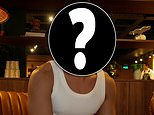Science
Experts Warn of Risks as Humanoid Robots Edge Closer to Reality

The rise of autonomous humanoid robots may revolutionize industries, but experts caution that strict regulations are necessary to mitigate potential risks. Dr. Carl Strathearn, a leading robotics researcher at Edinburgh Napier University, emphasizes that despite advancements, we are still years away from deploying truly useful humanoids. He will share his insights at New Scientist Live, taking place from October 18-20, 2023, at London ExCel.
While recent demonstrations have showcased humanoid robots performing tasks like pouring drinks and mimicking human expressions, Dr. Strathearn underscores a significant gap between these portrayals and the reliability required for everyday assistance. He stated, “The biggest problem is the lack of real-world data and the technological means of gathering it in large enough quantities to train our robots effectively.” Current systems heavily depend on virtual simulations, which can lead to machines that function well in controlled environments but struggle in unpredictable real-world situations.
One proposed solution involves crowdsourcing substantial real-world data, potentially through wearable technology like Meta’s smart glasses. Dr. Strathearn acknowledges the ethical challenges of such an approach, which would require participation from thousands, if not millions, of individuals to collect and share valuable data.
Dr. Strathearn also addresses a more pressing concern: the human factor in operating these robots. “Humans control them using handheld devices, which makes them very dangerous and unreliable,” he explained. He is currently leading a petition to the UK Parliament advocating for regulations governing humanoid robots in public spaces, citing an increase in incidents where human error has led to serious near misses between people and robots.
Adding to the complexity is the perception issue surrounding humanoid robots. While robots that closely resemble humans can evoke discomfort—a phenomenon known as the “uncanny valley”—they can also provide comfort in specific contexts, such as dementia care. Dr. Strathearn noted, “People have different thresholds of perception when it comes to creepiness,” which is why it is essential to develop robots with varying degrees of human likeness.
During his doctoral studies, Dr. Strathearn created the “Multimodal Turing Test” to assess whether communication through lifelike robots made artificial intelligence appear more human. Subsequent studies by Japanese researchers supported his findings, indicating that people are more likely to perceive AI as human when it is delivered through a realistic robot. He believes that public acceptance of humanoid technology will require a gradual and informed introduction, especially among children learning about robotics and AI in schools.
Despite the challenges, interest in humanoid robots remains high. Dr. Strathearn remarked, “The hype is a major issue. We are far from humanoid robots that are good enough to do everyday tasks effectively, but that doesn’t stop major companies wanting to mass produce them.” He pointed out that the skills gap in robotics education is becoming increasingly evident, as universities often separate students into distinct disciplines like computer science, engineering, and design. “Without a solid foundation in education, I worry about the sustainability of the humanoid robotics industry,” he added.
Interestingly, Dr. Strathearn believes that one area where humanoid robots may find immediate application is in space exploration. He stated, “We could use telemetric or AI-controlled humanoids to work in space for longer periods than humans, advancing us further into the unknown.” These robots could potentially assist in terraforming planets or exploring rugged terrains that current robotic rovers cannot access.
While the prospect of robots aiding in colonizing new worlds is exciting, Dr. Strathearn’s warning remains clear: ensuring the safety and reliability of humanoid robots on Earth is paramount. “Robots might terraform Mars one day. But on Earth, only strict regulation will keep us safe,” he concluded.
-

 Entertainment3 months ago
Entertainment3 months agoAnn Ming Reflects on ITV’s ‘I Fought the Law’ Drama
-

 Entertainment4 months ago
Entertainment4 months agoKate Garraway Sells £2 Million Home Amid Financial Struggles
-

 Health3 months ago
Health3 months agoKatie Price Faces New Health Concerns After Cancer Symptoms Resurface
-

 Entertainment3 months ago
Entertainment3 months agoCoronation Street’s Carl Webster Faces Trouble with New Affairs
-

 Entertainment3 months ago
Entertainment3 months agoWhere is Tinder Swindler Simon Leviev? Latest Updates Revealed
-

 Entertainment4 months ago
Entertainment4 months agoMarkiplier Addresses AI Controversy During Livestream Response
-

 Science1 month ago
Science1 month agoBrian Cox Addresses Claims of Alien Probe in 3I/ATLAS Discovery
-

 Entertainment4 months ago
Entertainment4 months agoKim Cattrall Posts Cryptic Message After HBO’s Sequel Cancellation
-

 Entertainment3 months ago
Entertainment3 months agoOlivia Attwood Opens Up About Fallout with Former Best Friend
-

 Entertainment6 days ago
Entertainment6 days agoCoronation Street Fans React as Todd Faces Heartbreaking Choice
-

 Entertainment3 months ago
Entertainment3 months agoMasterChef Faces Turmoil as Tom Kerridge Withdraws from Hosting Role
-

 Entertainment4 months ago
Entertainment4 months agoSpeculation Surrounds Home and Away as Cast Departures Mount



















